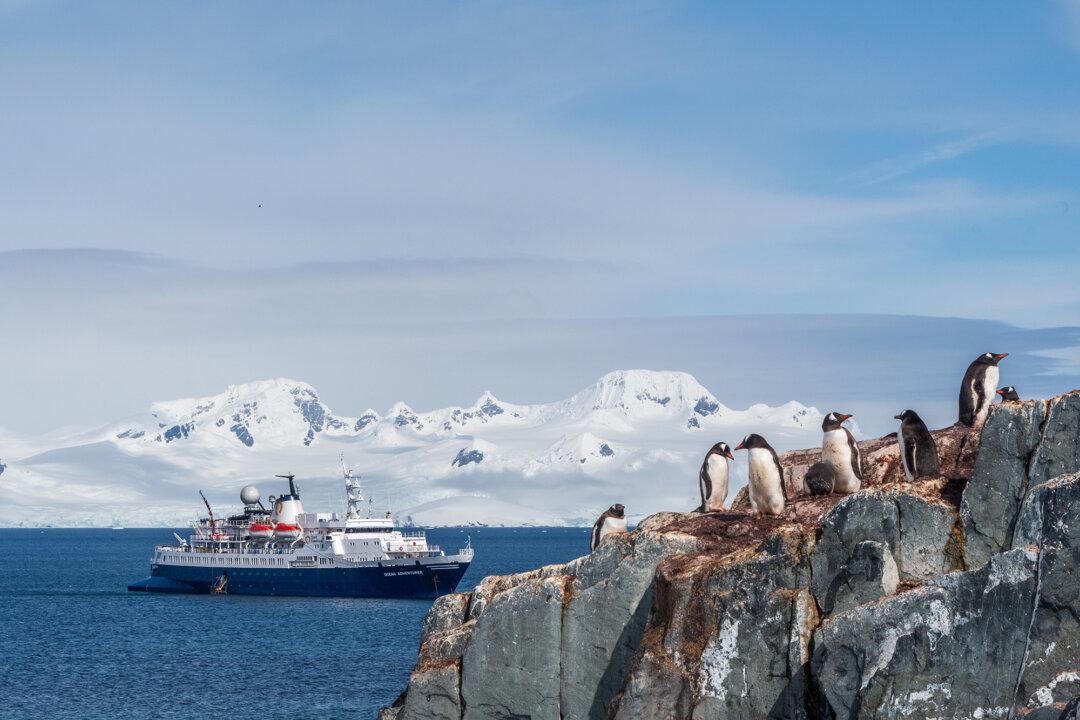It can be a bit difficult, searching for something that’s invisible—but that was the mission, today. Heading north out of the capital, Quito, the grind and gridlock of the city quickly fell away. The highway was busy, and a bit gritty, with big diesel trucks carrying their cargo across the country. But it was rather lovely, too, descending and then winding and climbing back up through the Andean foothills.
We made a couple surprise stops along the way. First: a pilgrimage site. In a small, charming village, sunny buildings surround a central square. Here, a farmer saw the image of Christ’s outstretched arms in a tree. People came from all around to see this miracle. Those limbs are now preserved inside a church, the Sanctuary of the Lord of the Tree, in a glass case. While we found the front door locked, we were still able to peer through the window and see them.

Next: the Pululahua Geobotanical Reserve. As we wound up the highway to this high-altitude spot, clouds closed in, sweeping across the road and slowing traffic. Parking, we huffed and puffed up the inclined lot, breathing only very thin air as we made our way to a mirador that gave a view of absolutely nothing.

Looking down into a volcanic crater, we had to imagine the homes at the bottom—this is one of very few calderas in the world inhabited by humans. At the base, literally inside the volcano, farmers make the most of the super-fertile soil. But at this moment, all that was socked in, just a thick fog blowing into our faces from deep inside, a dense wall of moisture obscuring literally everything more than a couple feet in front.
Seeking the Equator
Stretching 24,901 miles around the world, this imaginary line is located at zero degrees latitude—exactly halfway between the North and South Poles and dividing the world into Northern and Southern Hemispheres. At the equator, the world is actually thicker by about 27 miles—a phenomenon called “equatorial bulge.”It’s a bit complicated, but related to the fact that the Earth rotates at unequal speeds at different latitudes—and it is fastest at the equator.
Gravitational pull is weakest here, which is why many rocket-launch sites are located as close as possible to the line (the reason why Kennedy Space Center is in Florida). And it’s also why Ecuador’s Mount Chimborazo is the highest point on earth—that is, the tallest bit of terrestrial rock from the center of the earth. But when measured from sea level, of course, Mount Everest is much taller.
The sun sets fastest along the line. Trade winds converge here, causing frequent thunderstorms. People had long believed in this median line, but nobody was able to measure it accurately until an expedition came to Ecuador in 1736.
As we arrived at the larger of the two equatorial monuments in the country, I remember guides on past trips messing with me, telling me I’d feel a bump when I crossed other imaginary lines—the Arctic Circle, or the Tropic of Capricorn. But walking here, I (of course) don’t feel anything under foot. No bump. Paying a modest ticket price, we proceed through the Ciudad Mitad del Mundo, a complex built around the Monument to the Equator, which includes shops and restaurants, museums, and a planetarium.
Replacing an earlier, smaller monument from the 1930s, the new monument, a pyramid rising 98 feet and constructed from concrete and cut stone, was erected between 1979 and 1982. It celebrates the Franco-Spanish Geodesic Mission of 1736 which, essentially, found the equator and mapped it.
A broad walk of heroes leads up to the main monument, statues on each side celebrating the scientists, French and Spanish (plus one Ecuadorian) who arrived here on this important mission.
Entering a small but impressive museum, I learned how King Louis XV of France and the French Academy of Sciences sent a team of scientists on a challenging expedition. Their goal: find out if the circumference of the earth varied, and if it was greater at the poles or the equator.
Sailing the Atlantic and Caribbean, they traversed the Isthmus of Panama, then sailed the Pacific. In Ecuador, they climbed steep slopes and pushed through jungles. The actual science is lost on me, but the upshot is that the men were able to, using a method of arc measurement on a long valley of mountain peaks, trace the line and infer the circumference of the earth. In the process they also created a modern, universal means of measurement: the meter.
We finally approached the globe-topped monument itself. A bright yellow line, representing the absolute middle of of the world, runs down the middle of the walkway. In front of the monument, people posed for all sorts of funny photos, balancing on that line with one leg, say, or hopping back and forth over it.





